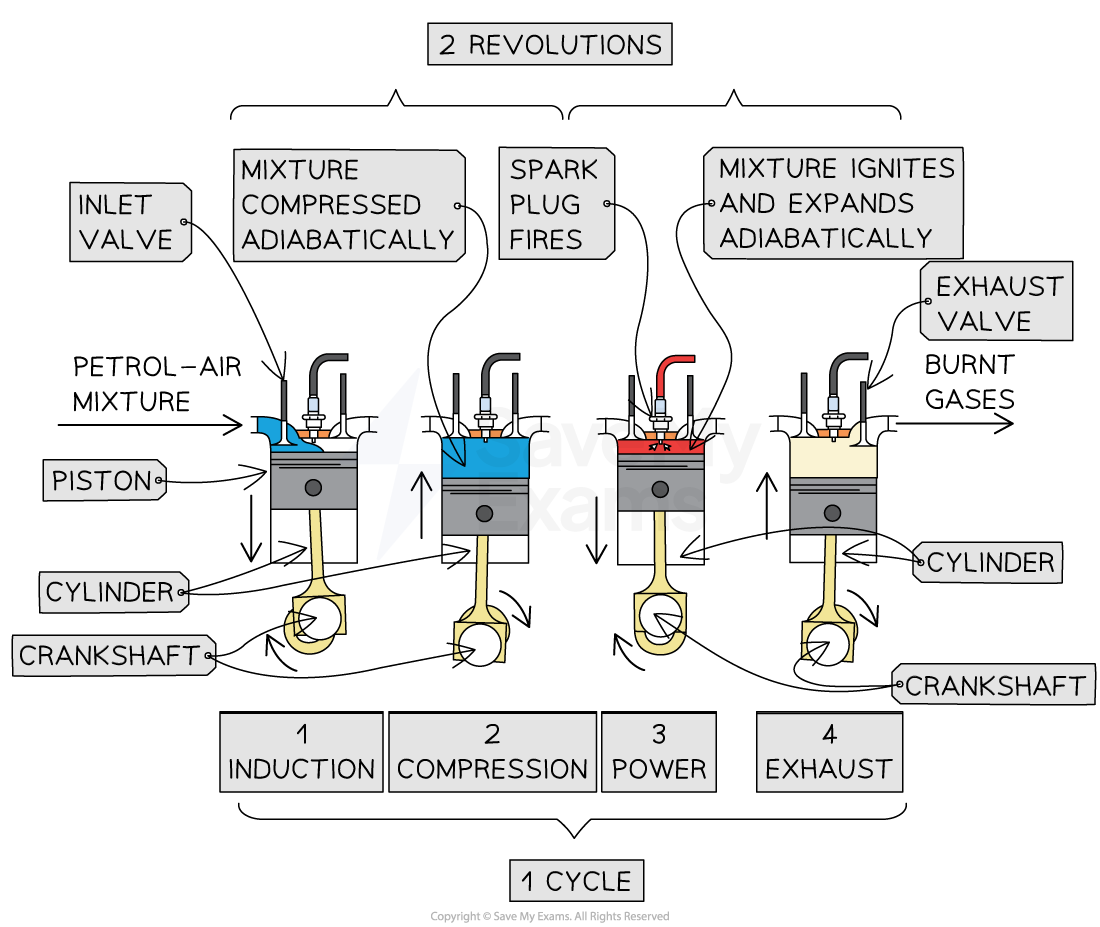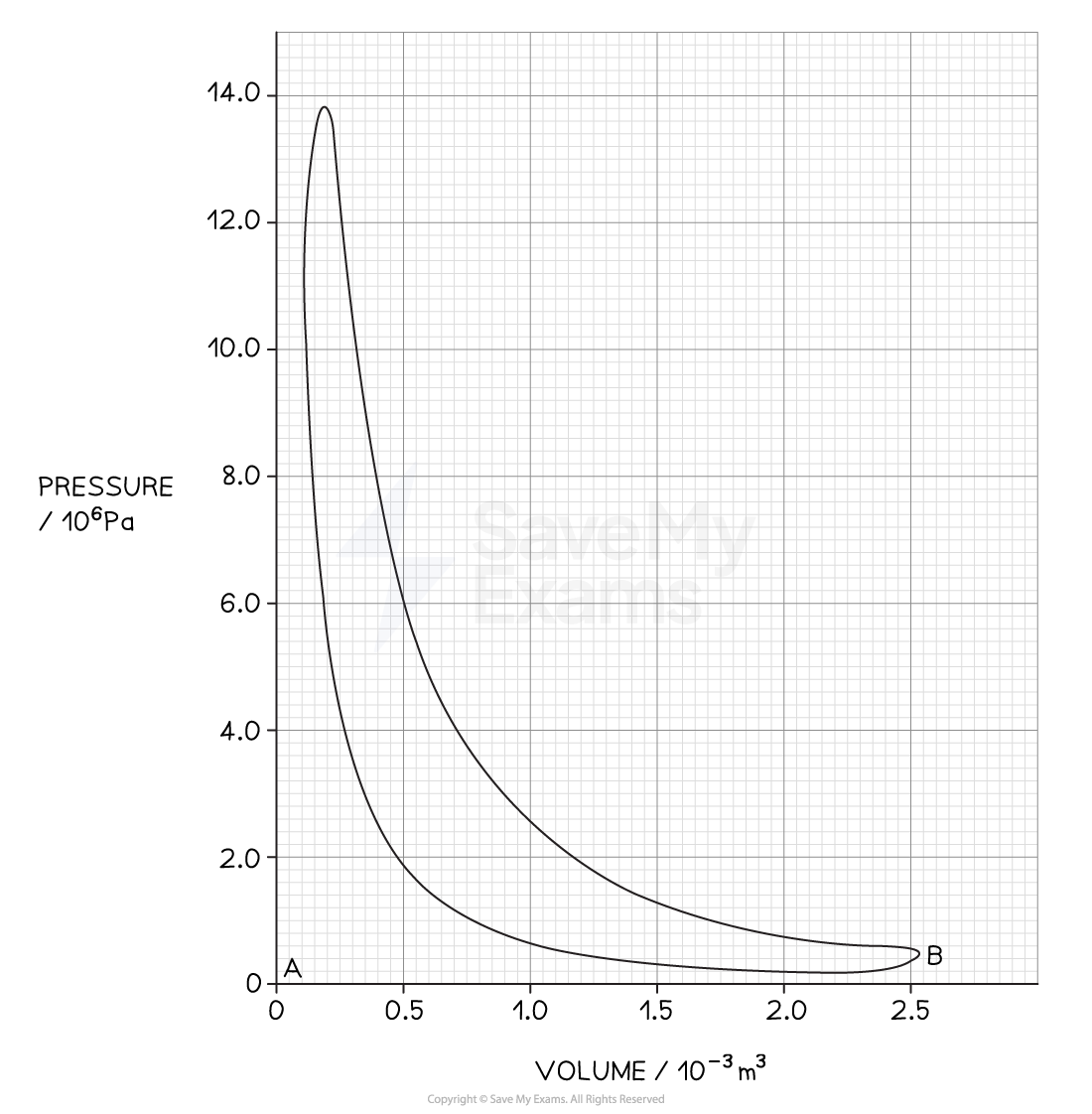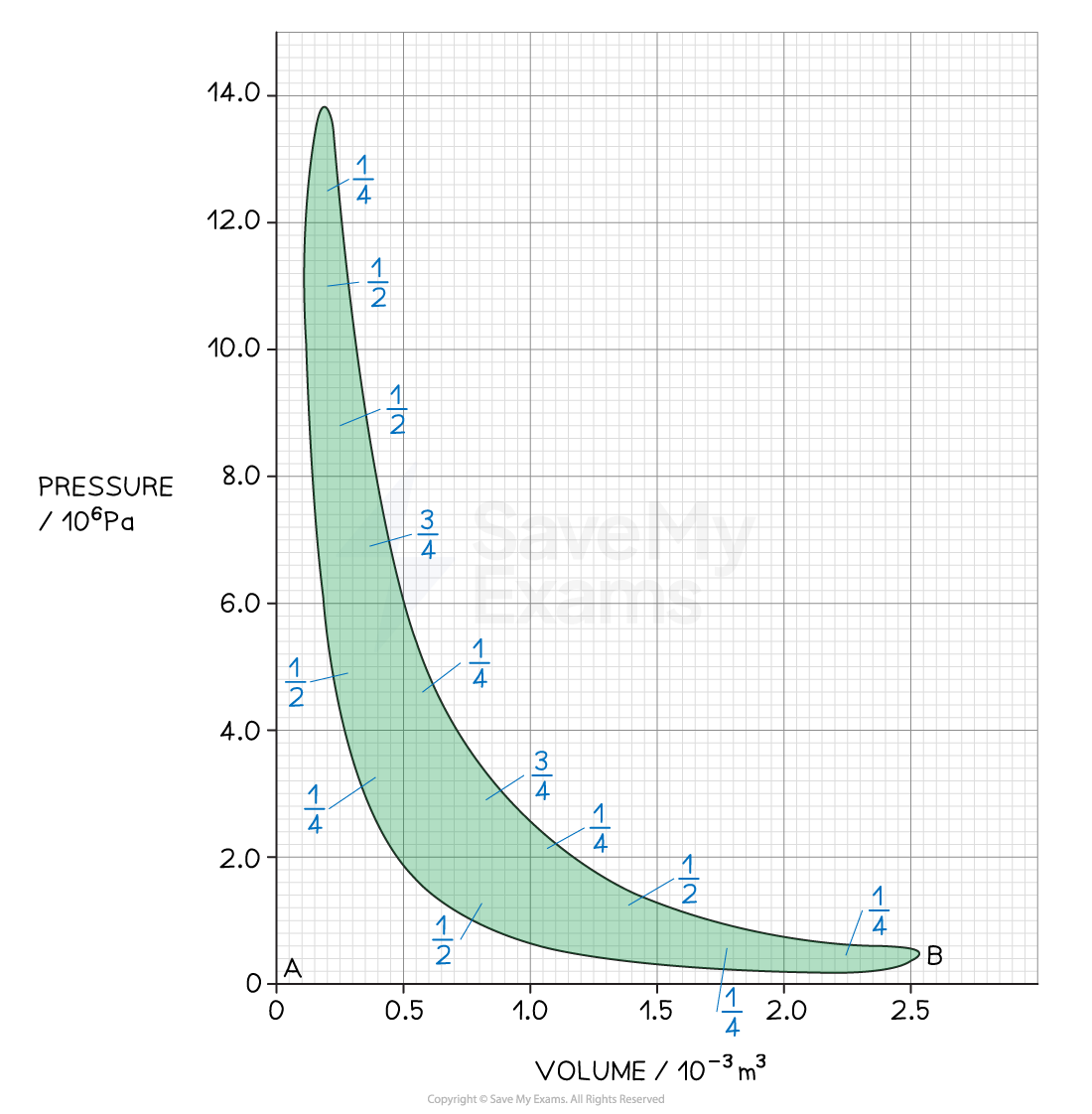Power Output of an Engine (AQA A Level Physics): Revision Note
Exam code: 7408
Power Output of an Engine
An engine's efficiency depends on its power output
This is determined by the fuel
Input Power
The calorific value of fuel is the amount of energy fuel stores per unit volume (or per unit mass)
For liquid fuel, this is measured in J kg–1
For a gas, this is measured in J m–3
The flow rate of fuel is the volume (or mass) that flows per second
For liquid fuel, this is measured in kg s–1
For a gas, this is measured in m3 s–1
The product of these gives the input power of the engine:
Indicated Power
The indicated power is the power developed in the cylinder of an engine
This depends on the number of cycles (strokes) per second
In a four-stroke engine, 1 cycle is equal to 2 revolutions

A four-stroke engine has 2 revolutions of the crankshaft in one cycle
The power developed is the work done each second, which is the area of the main p-V loop of the indicator diagram

Area of p–V loop for a diesel engine
The indicated power is defined by the equation:
Output (Brake) Power
The brake power is the power output by the engine and is the same as the rotational power
Friction Power
Part of the indicated power must be used to overcome frictional forces within the engine
Due to this, this means the brake power is lower than the indicated power
It is defined as:
Worked Example
A four-stroke diesel engine with three cylinders is running at constant speed on a test bed. An indicator diagram for one cylinder is shown in the figure below and other test data are given below:
measured output power of engine (brake power) = 75.0 kW
fuel used in 150 seconds = 0.284 litre
calorific value of fuel = 38.6 MJ litre–1
engine speed = 3500 rev min–1

(a) Determine the indicated power of the engine, assuming all cylinders give the same power
(b) Calculate the input power of the engine.
Answer
Part (a)
Step 1: State the indicated power equation
Step 2: Calculate the number of cycles per second
The engine speed is 3500 rev min–1
This is
rev s–1
1 cycle = 2 revolutions
Therefore, the number of cycles per second is
Step 3: Calculate the area of the p-V loop
It is easier to use the big squares
1 big square = volume of (0.5 × 10–3) × (2.0 × 106) = 1000 m3 Pa

Splitting up the graph into squares gives
squares
This gives an area of
The indicated power is therefore:
Part (b)
Step 1: State the input power equation
Step 2: Calculate the fuel rate
Fuel used in 150 seconds = 0.284 litres
Step 3: Calculate the input power
Examiner Tips and Tricks
There are a lot of equations here. These are all given in your data sheet, so you must be confident in how to use them.
For input power, make sure the calorific value and flow rate are in the same units. For example, if one is in terms of mass, the other must also be in terms of mass.
Sometimes, the engine may not have cylinders. Not all engines will require cylinders to function, depending on their type. In this case, this part of the indicated power equation can be omitted. Make sure you use the number of cycles per second instead of the time for one cycle!
Being able to find areas from graphs by counting the squares is a very important skill to have in A level physics. The mark scheme will allow a wide range of answers, so don't worry if you're approximations are slightly out, as the accepted answers will adjust for these

Unlock more, it's free!
Did this page help you?